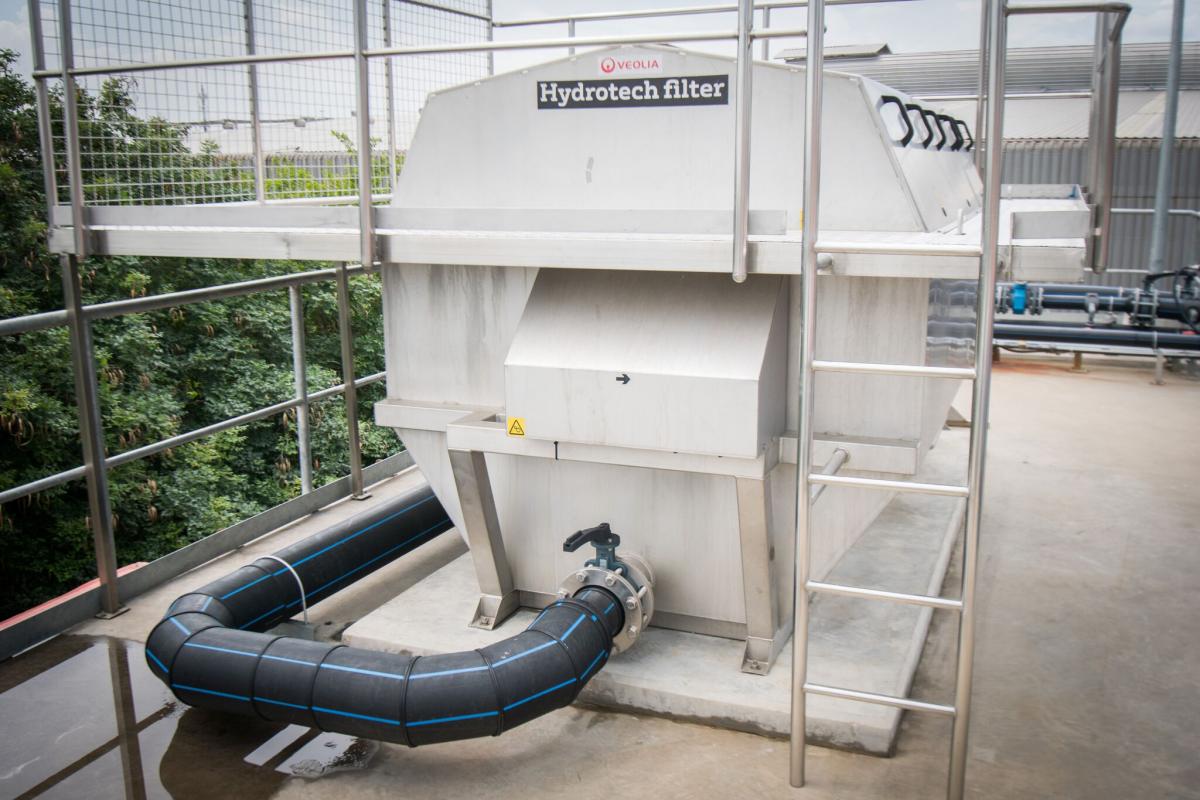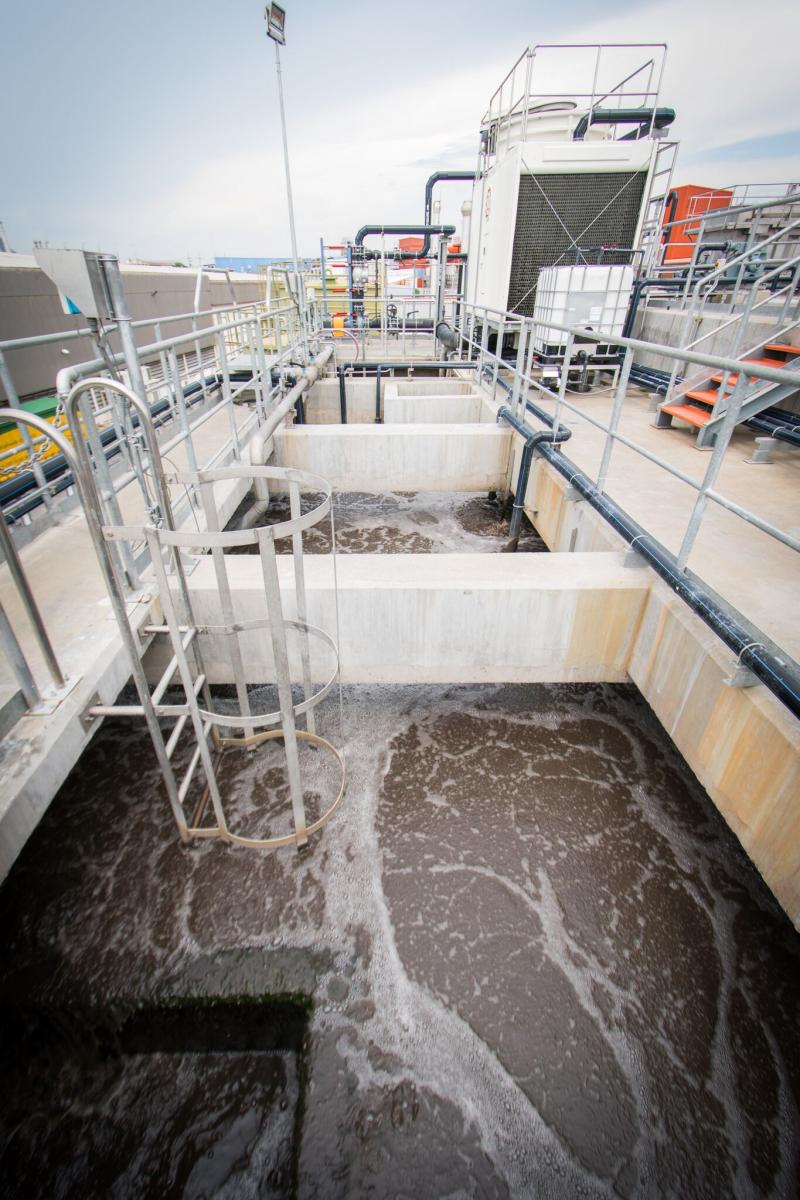THE Associated British Foods Thailand (ABFT), an Associated British Foods (ABF) Group subsidiary under the Twinings Ovaltine (TwO) business unit, is one company that strongly believes in working toward sustainable outcomes to ensure business success in the long-term. The manufacturer behind one of the world’s most loved beverages, Ovaltine, is part of the large, diversified international food ingredients and retail organization, which encourages its business units to minimize its impact on the environment.
According to its 2016 Corporate Responsibility Report, ABF obtained 49% of its total energy from renewable sources, recycled 78% of total waste generated, and reduced its gross greenhouse gas emissions by 9%. Rolf Haas, Regional Engineering Manager at ABFT, shared, “Environmental sustainability is taken very seriously at TwO. We are active participants in reducing our energy and water footprint among other activities to achieve business sustainability.”
Wastewater in the F&B industry
One of the largest concerns facing manufacturers from the Food and Beverage (F&B) industry is wastewater management. The effluent can be challenging to treat as it is often loaded with organic matter like fats, oils, and greases (FOGs). Due to the high chemical oxygen demand (COD) and total suspended solids (TSS) found in the industry’s effluent, effective wastewater treatment is important to prevent high organic loading in streams and municipal treatment plants.
This was a challenge faced by ABFT’s Ovaltine plant in Samutprakarn, Bangkok, Thailand. Since its establishment in 1989, ABFT has always outsourced its wastewater treatment to an external service provider. But as Ovaltine’s manufacturing operations in Thailand expanded over the years, its increased wastewater flow slowly exceeded the service provider’s capacity for wastewater treatment. Rolf shared, “It was high time for us to build a wastewater treatment plant within the Ovaltine factory to support our expanding production processes. The difficulty was that we did not have a large area to accommodate massive wastewater treatment solutions, so we needed compact solutions that can effectively treat the effluent.”
When life hands you lemons...
Building wastewater plants at F&B facilities can be challenging due to changes in influent conditions brought on by factors such as load shocks, changes in temperature and production, and limited equalization capacity. Rolf was determined to incorporate a solution that could handle the plant’s peak-loads and fluctuations in wastewater processing. Among the providers that submitted proposal solutions to ABFT, Veolia Water Technologies (Veolia) stood out with its unique wastewater plant design.
Rolf elaborated, “Veolia designed a vertical wastewater plant to optimize the given space. It was brilliant because it would allow us to achieve our wastewater objectives without having to compromise on our parameters. Veolia has a strong reputation in this industry, and by drawing on its global network of expertise, the Veolia team was confident of customizing a wastewater treatment plant for maximum efficiency. We were also appreciative of Veolia’s local presence in Bangkok, as on-the-ground support was a critical consideration for us.”
In addition to providing a conceptual 3D design of the proposed wastewater treatment plant, Veolia collected ABFT’s effluent to conduct a preliminary study. An anaerobic biodegradability test was carried out to evaluate the extent of COD removal and the potential for biogas production. Veolia then worked closely with Rolf and ABFT’s engineers to identify the right combination of wastewater technologies that would yield the most ideal results for the Ovaltine facility.
At the same time, Veolia had to tackle fluctuations in the influent, minimize operating costs, work within the available land area, and design a turnkey solution that integrates flawlessly into the existing plant. Michael Poonpipat, Business Development Director, Projects, Thailand, Veolia Water Technologies, shared, “Rolf was firm about maximizing wastewater treatment flow to allow additional capacity for greater flow treatment requirements in the next ten years. Using the results from the preliminary study, we then worked together to integrate Veolia’s technologies into one federated solution for the Ovaltine plant.”

The Hydrotech Drumfilter is a mechanical and self-cleaning filter specially designed for high performance in systems where it is essential to prevent particles from fragmentation

The Moving Bed Biofilm Reactor (MBBR) stabilizes discharge quality and optimizes the water tank for future tertiary treatment and reclaim
Matching effective solutions to resolve challenges
One of ABFT’s main requirements for the wastewater treatment plant was the ability to maximize wastewater flow for both existing and projected future flow requirements in the next decade. To address that, Veolia implemented a design flow of 1,000 m3/day with a peak flow of 1,200 m3/day, which is a high flow rate for an area measuring 30 m x 26 m. Apart from planning for future growth, the Veolia team also helped ABFT achieve other targets through its proprietary technologies, including a reduction of the COD concentration from 11,500 mg/L to 120 mg/L, a trim on FOG levels from 1,500 mg/L to 5 mg/L, and the moderation of total suspended solids from 1,500 mg/L to 50 mg/L.
As the Ovaltine factory was situated in a residential neighborhood, Veolia had to ensure that no odor would escape wastewater plant that was to be built within the facility. The Veolia team took all of the factors into consideration and proposed several cutting-edge and space-saving technologies for this turnkey project. These include Veolia’s Dissolved Air Flotation (DAF), Biothane® Upflow Anaerobic Sludge Blanket (UASB), AnoxKaldnes™ Biological Activated Sludge™ (BAS), and the Hydrotech™ Drumfilter.
The wastewater coming out of the Ovaltine factory requires pretreatment before it undergoes the treatment process proper. The post-production influent first enters the DAF unit for FOG removal. The DAF process also prepares the raw wastewater for the upcoming anaerobic treatment. The conditioned wastewater is then pumped into the Biothane® UASB reactor, where a biological conversion process converts COD into biogas. The anaerobic treatment is particularly suitable for F&B manufacturers because wastewater from the industry contains organic compounds from processed materials, making biological wastewater treatment advantageous. A proven and reliable process, the UASB technology features a special influent distribution system that ensures that the wastewater is equally distributed over the entire reactor surface area.
Due to ABFT’s high COD inlet concentration, Veolia integrated the AnoxKaldnes™ BAS™, a combination of Moving Bed Biofilm Reactor (MBBR) technology with conventional activated sludge (AS) to further remove any remaining COD dissolved in the wastewater, and to promote a stable and more efficient activated sludge process with improved sludge settling characteristics. Using biofilm-coated carriers, MBBR stabilizes discharge quality and optimizes the water tank for future tertiary treatment and reclaim.
The effluent then flows into a second DAF clarifier for biological sludge separation, before finally entering the Hydrotech™ Drumfilter system. The Drumfilter features a larger filter area to promote higher efficiency levels, and provides an extra layer of security to remove any remaining suspended solids from the wastewater. An ideal design for treating wastewater in a space-constrained environment, Veolia’s turnkey solution also ensured effective control of biological activity and high-quality effluent, while allowing for higher organic loading rates.
Commenting on his involvement in the ABFT project, Chanchai Borwornwuttipong, Project Engineer from the Design & Build Projects Team at Veolia, shared, “The focus of this turnkey project was to properly treat the raw wastewater to enable discharge into local streams, so that was what we focused on. The addition of the second DAF clarifier and the Drumfilter system was to ensure that the treated wastewater complies with local discharge standards and aligns with ABFT’s global environmental sustainability goals.”
A lower OPEX
In addition to its compact nature, Veolia’s automated technologies allow ABFT to function on one-operator shifts and enables remote monitoring. With Veolia’s wastewater plant design, ABFT achieved ease of operation, a reduction in sludge production, and lower levels of electrical consumption. The plant also generates a considerable volume of biogas via the UASB reactor, offering ABFT dual fuel options for its boilers. These positive results contributed to an overall lower operating expenditure for ABFT.
Discussing ABFT’s expectations for Veolia, Rolf shared, “It was important that we install a robust wastewater plant that can handle peak-loads and fluctuations. We appreciate the lengths that Veolia went to in customizing the most suitable and compact turn-key solution for the Ovaltine factory. It was refreshing how the team pushed the boundaries to achieve desirable results. Our experience with Veolia’s engineers was a positive and collaborative one, and we appreciate their flexibility to accommodate our requirements.”
Reusing treated effluent in the future
At present, the Ovaltine facility is focused on achieving sustainable wastewater management. However, Rolf disclosed that they are open to incorporating wastewater recycling technologies for onsite reuse purposes, provided effluent recycling becomes more viable. “For sure, it would be good for us to reuse treated wastewater for non-potable purposes,” Rolf said. “And that is a topic that we will definitely revisit in the future. I am satisfied that we can now confidently discharge our wastewater, and it is a way that Ovaltine is playing its part towards building a more sustainable future in Thailand – for our business and the environment.”
Michael concluded, “Sustainability is at the heart of what we do here at Veolia. We understand the necessity to create and sustain access to resources. This project demonstrated Veolia’s ability across disciplines and reaffirms our expertise as a trusted design-and-build partner for clients across different industries. As an established water and wastewater solutions specialist, Veolia was able to provide ABFT with the expertise and the flexibility that it needed. At the end of the day, we helped another leading company to achieve sustainable wastewater management, and that is a huge win for all parties involved.”
Air Jordan XIII Melo PE













